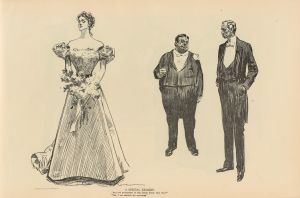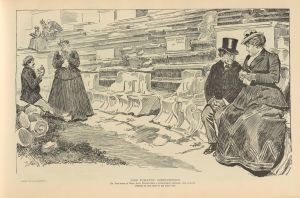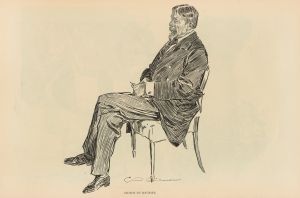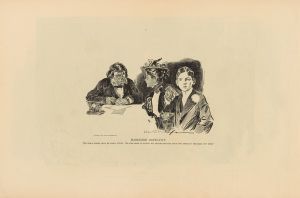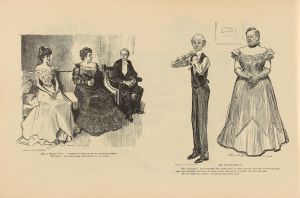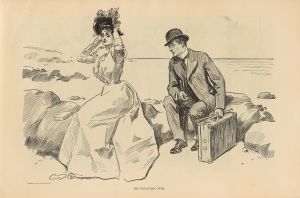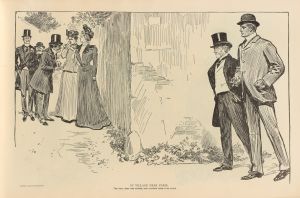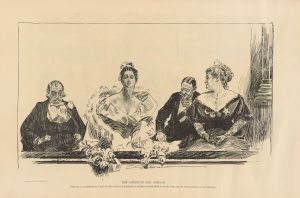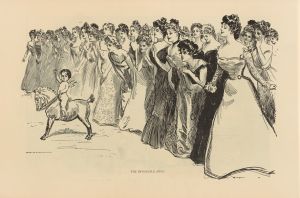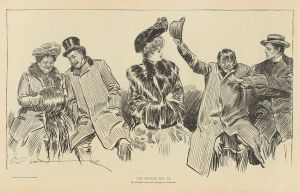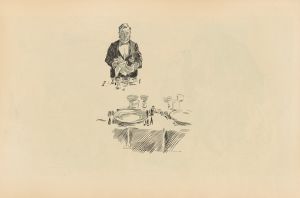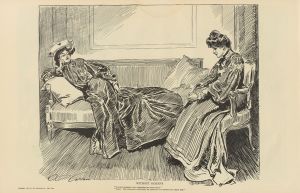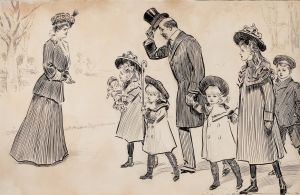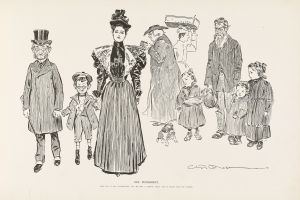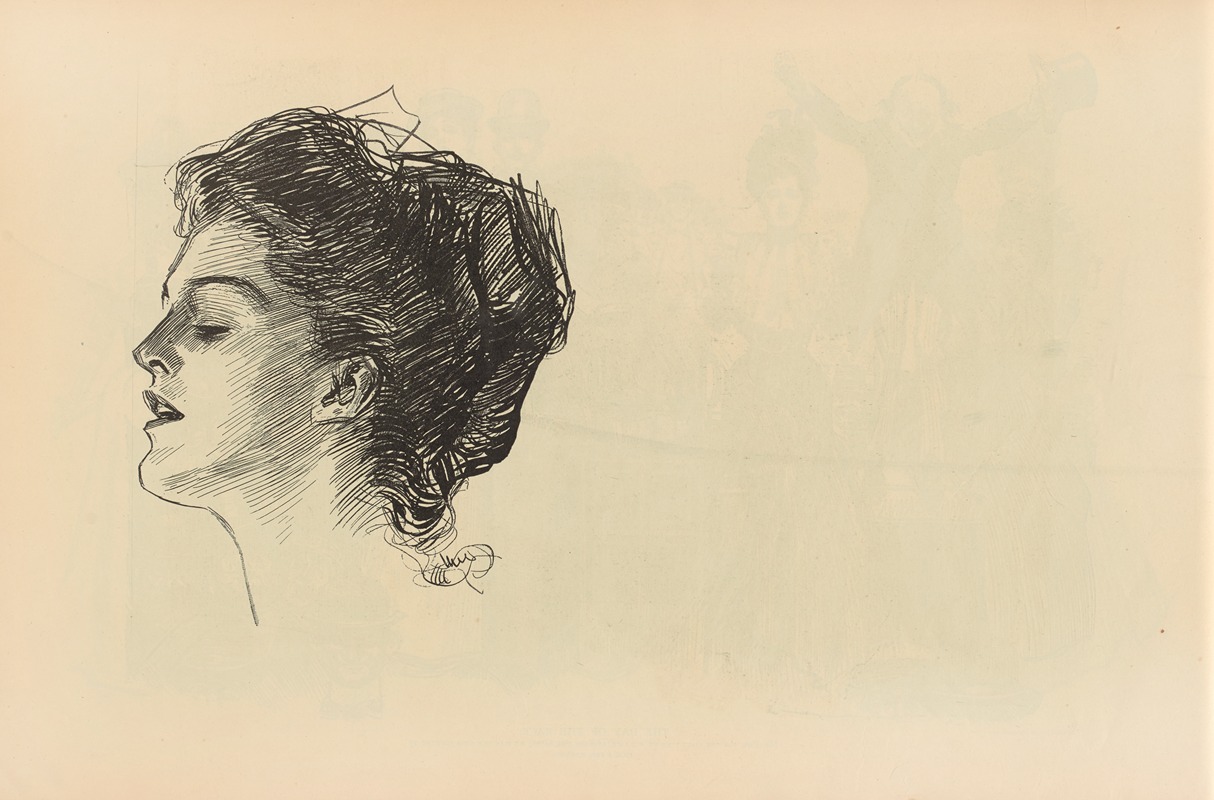
Untitled
A hand-painted replica of Charles Dana Gibson’s masterpiece Untitled, meticulously crafted by professional artists to capture the true essence of the original. Each piece is created with museum-quality canvas and rare mineral pigments, carefully painted by experienced artists with delicate brushstrokes and rich, layered colors to perfectly recreate the texture of the original artwork. Unlike machine-printed reproductions, this hand-painted version brings the painting to life, infused with the artist’s emotions and skill in every stroke. Whether for personal collection or home decoration, it instantly elevates the artistic atmosphere of any space.
Charles Dana Gibson was an influential American illustrator best known for his creation of the "Gibson Girl," an iconic representation of the American woman at the turn of the 20th century. However, specific information about a work titled "Untitled" by Charles Dana Gibson is not readily available in historical records or widely recognized art collections. Therefore, it is important to focus on Gibson's broader contributions to art and illustration to provide context.
Charles Dana Gibson was born on September 14, 1867, in Roxbury, Massachusetts. He studied at the Art Students League in New York City, where he honed his skills in drawing and illustration. Gibson's career took off in the 1890s when his illustrations began appearing in popular magazines such as Life, Harper's Weekly, and Scribner's. His work was characterized by its detailed pen-and-ink style, capturing the social dynamics and fashion of the era.
The "Gibson Girl" became Gibson's most famous creation, symbolizing the idealized American woman. She was depicted as independent, confident, and fashionable, often portrayed in various social settings. The Gibson Girl was not just a figure of beauty but also represented the changing roles of women in society during the Progressive Era. This creation had a significant impact on American culture and fashion, influencing the way women were perceived and how they dressed.
Gibson's illustrations were not limited to the Gibson Girl. He also created a wide range of works that captured the essence of American life and society. His illustrations often included satirical and humorous elements, reflecting his keen observation of social norms and behaviors. Gibson's work was widely appreciated for its artistic quality and its ability to convey complex social themes with clarity and wit.
Throughout his career, Gibson's illustrations were compiled into several books, and his work was exhibited in galleries, further cementing his status as a leading illustrator of his time. In 1904, he married Irene Langhorne, who was one of the inspirations for the Gibson Girl. The couple became prominent figures in New York society.
Gibson continued to work as an illustrator until the 1930s, when he shifted his focus to painting. He passed away on December 23, 1944, leaving behind a legacy that influenced generations of artists and illustrators.
While specific details about a work titled "Untitled" by Charles Dana Gibson are not available, his overall contributions to art and illustration remain significant. His ability to capture the spirit of his time through his illustrations has left a lasting impact on American art and culture.





